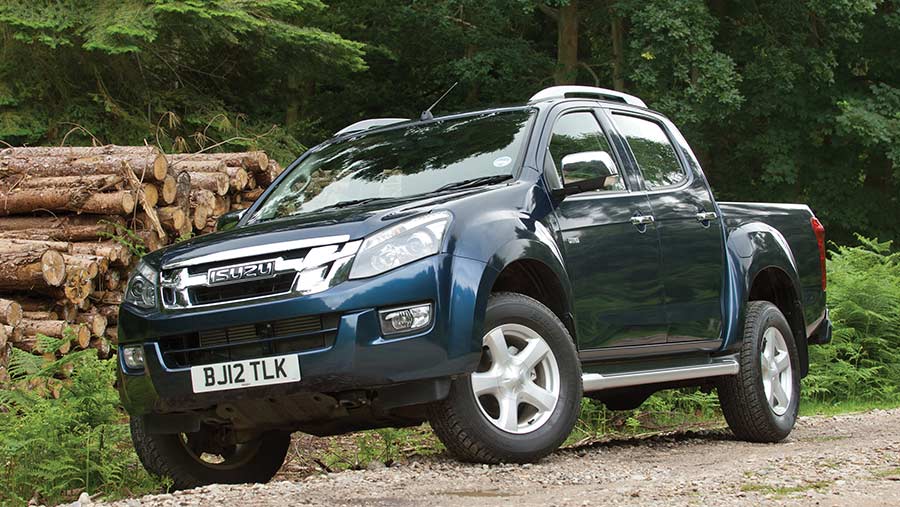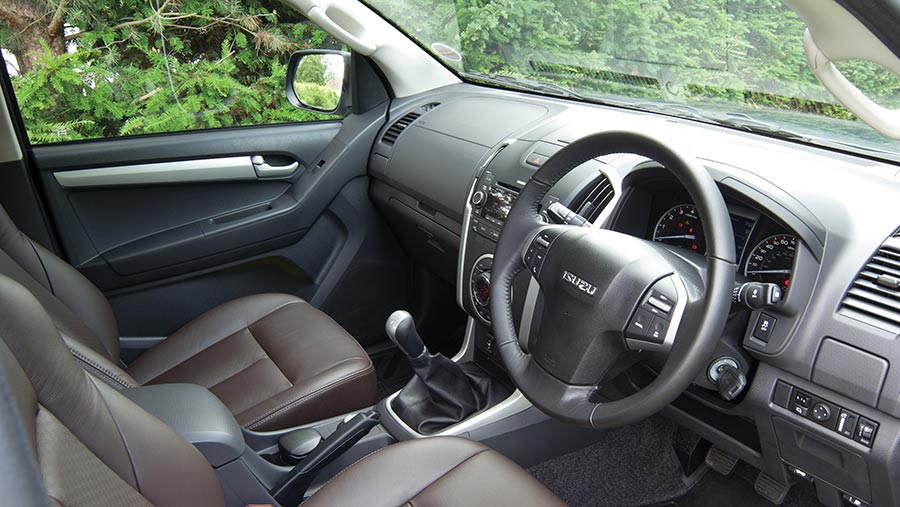Tips for buying a second-hand pickup: Isuzu D-Max
 © Isuzu UK Ltd
© Isuzu UK Ltd Isuzu D-Max RT50 (2012 to 2017)
The D-Max RT50 was launched in 2012, replacing Isuzu’s line-up of simple, tough Rodeo trucks that had been knocking around since 2003.
These new vehicles brought in considerably more refinement, but they were still geared toward the working, rather than lifestyle, end of the market.
Isuzu kept things simple, with all UK-sold vehicles running a twin-turbo 2.5-litre four-cylinder diesel engine that developed 163hp and 400Nm torque. This was allied to either a six-speed manual transmission or five-speed auto, with a simple two-range transfer box.
Buyers had the option of single-cab, extended-cab or double-cab, with the latter coming in either Eiger, Yukon, Utah or Blade specs. The differences between these double-cab variants were mainly down to trim and equipment levels.
At launch, the D-Max had a 3t towing capacity, but this was increased to 3.5t in 2013, making it one of the few pickups capable of reaching the maximum braked towing capacity in the UK. Production continued until 2017, when the 2.5-litre engine was replaced with a 1.9-litre.
The 2012 release date makes the D-Max the youngest truck platform to feature in this feature and thankfully there are few reports of corrosion. However, some owners reckon the paint is a little on the thin side.
Generally, it seems to be reliable, but there have been some problems with the DPF regeneration cycle washing diesel into the oil.

© Isuzu UK Ltd
The firm’s strategy of selling through agricultural machinery dealerships means it had considerable success in the farming sector. However, total sales were a way off Ford, Toyota, Mitsubishi and Nissan.
Nevertheless, there’s still a decent choice on the second-hand market, with base-spec models starting at about £8,000 and top-spec later versions going for more than £15,000.
See also: Pickup test: Isuzu D-Max Utility
What to look out for
Diesel in the oil
The headline problem with the 2.5-litre D-Max is that the regeneration cycle for the DPF has been known to wash diesel into the oil.
The regen process involves firing more fuel into the cylinders to give a hotter combustion temperature that burns soot out of the DPF. However, unburnt diesel can end up running past the piston rings and getting into the oil. It seemed to be more of a problem for those that carried out mainly short journeys where regeneration cycles didn’t have time to complete.
It’s important to note that it didn’t happen on every vehicle, and Isuzu brought out some modifications to prevent it occurring. This seems to have worked, as the problem appears to be far less common than it was in the early days.
However, it’s still a wise idea to carry out regular oil checks to make sure the level isn’t rising. If it is, the oil should be changed and it’s probably a good idea to seek the help of a professional.
Turbo failure
D-Max trucks have a twin-turbo setup with a small and large blower that work in unison. Bearings in the larger unit have been known to fail, which will either need to be repaired or replaced.
There aren’t many of these trucks being broken in the UK, so used turbos can be hard to track down – when available, they cost in excess of £1,000. Reconditioning is another possibility, depending how damaged it is.
Specifications
Engine: 2.5-litre, four-cylinder diesel
Power: 163hp
Torque: 400Nm
Transmission options: Six-speed manual or five-speed auto
Towing capacity: 3t (3.5t from 2013)
Payload: 1,058kg to 1,136kg
*Expect some variation in specification throughout the build run

